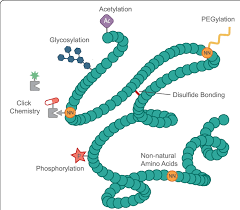Proteins undergo extensive modifications that prepare them to fulfil their functions. One such understudied protein modification is called pyrophosphorylation, in which a diphosphate group is attached onto the protein. In a seminal study published earlier this week in the journal Nature Chemical Biology (https://doi.org/10.1038/s41589-024-01613-5), a team led by Rashna Bhandari at the Centre for DNA Fingerprinting and Diagnostics (CDFD) in Hyderabad, in collaboration with Dorothea Fiedler’s laboratory in Leibniz-Forschungsinstitut für Molekulare Pharmakologie (FMP), Berlin, have provided definitive evidence for the occurrence of this protein modification on more than 70 proteins inside human cells. The Fiedler group developed a mass spectrometry method to detect pyrophosphorylated proteins, and distinguish them from other similar modifications. The Bhandari lab showed that this unique modification is largely dependent on the presence of a family of intracellular small molecules called inositol pyrophosphates, which are composed of a six-membered ring of carbon atoms decorated with seven or eight phosphate groups. The study demonstrated a link between pyrophosphorylation of certain nuclear proteins and the cell’s ability to undertake fresh protein synthesis. A commentary article titled “Pyro(phospho)mania”, commissioned by the journal (authored by Claire E. Eyers & Christopher J. Clarke) highlights the importance of this study (https://doi.org/10.1038/s41589-024-01606-4). It states that the “prevalence of pyrophosphorylation identified in this study points to a new player in the regulation of signaling networks and metabolic sensing”.


